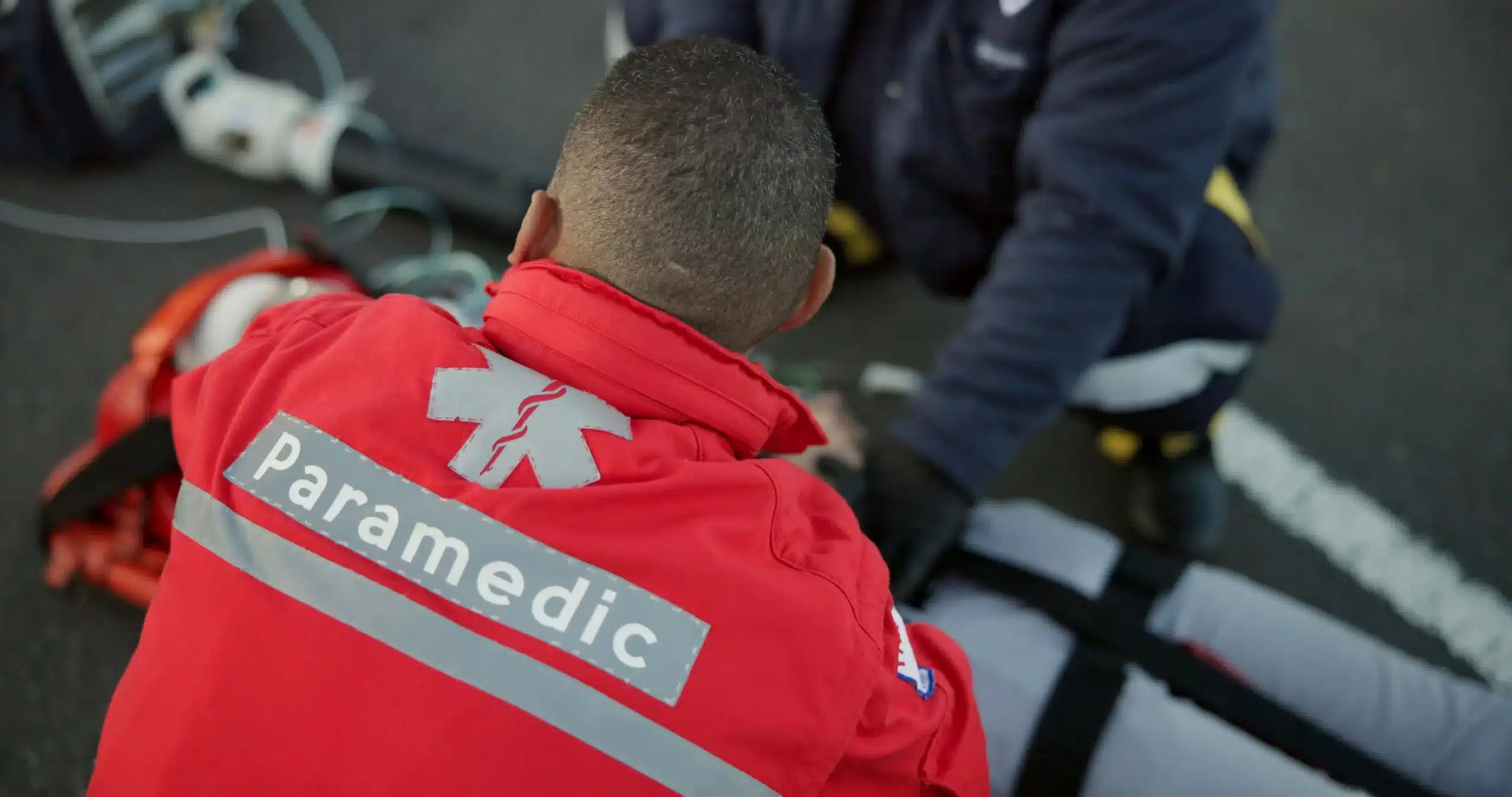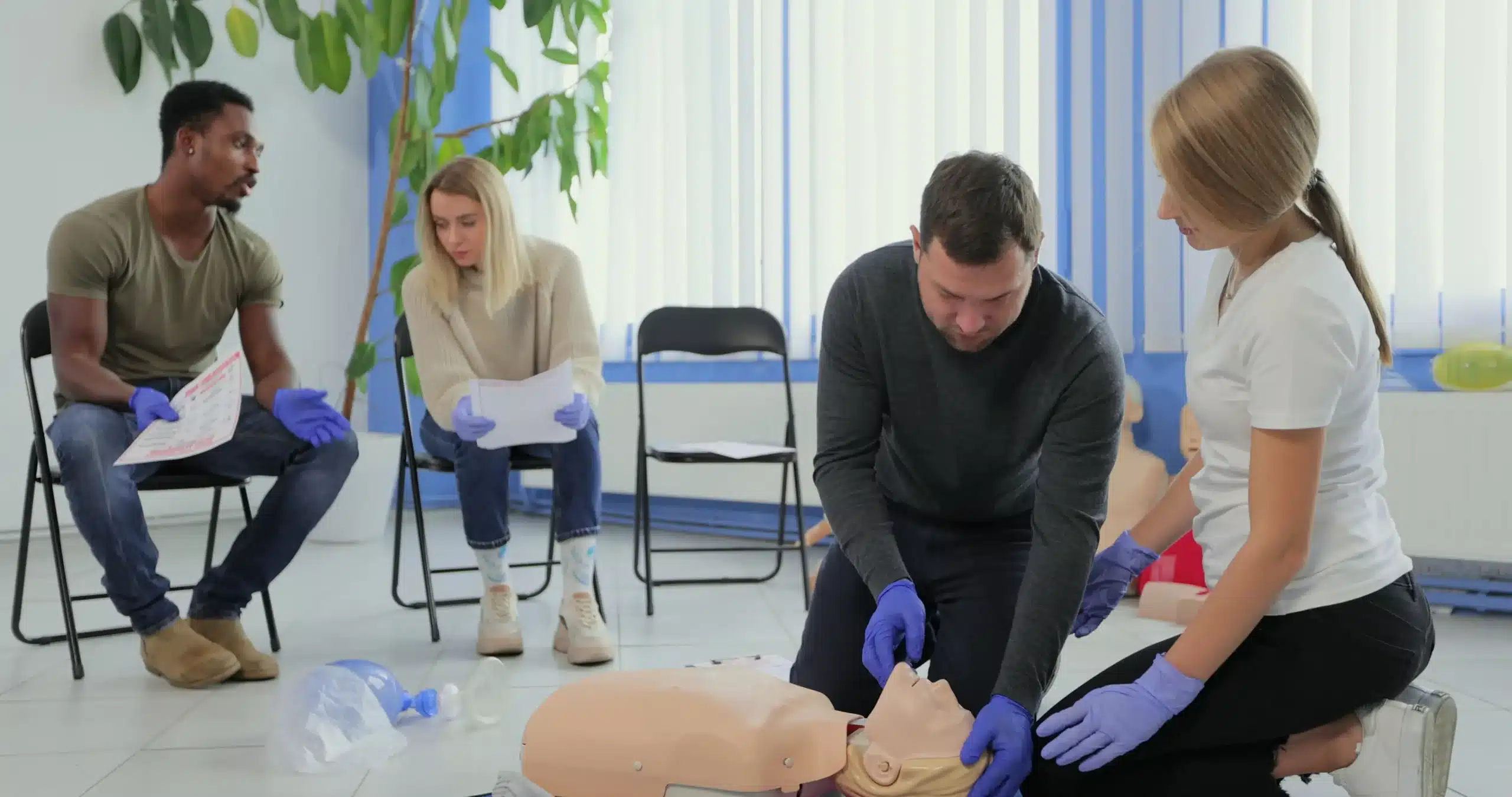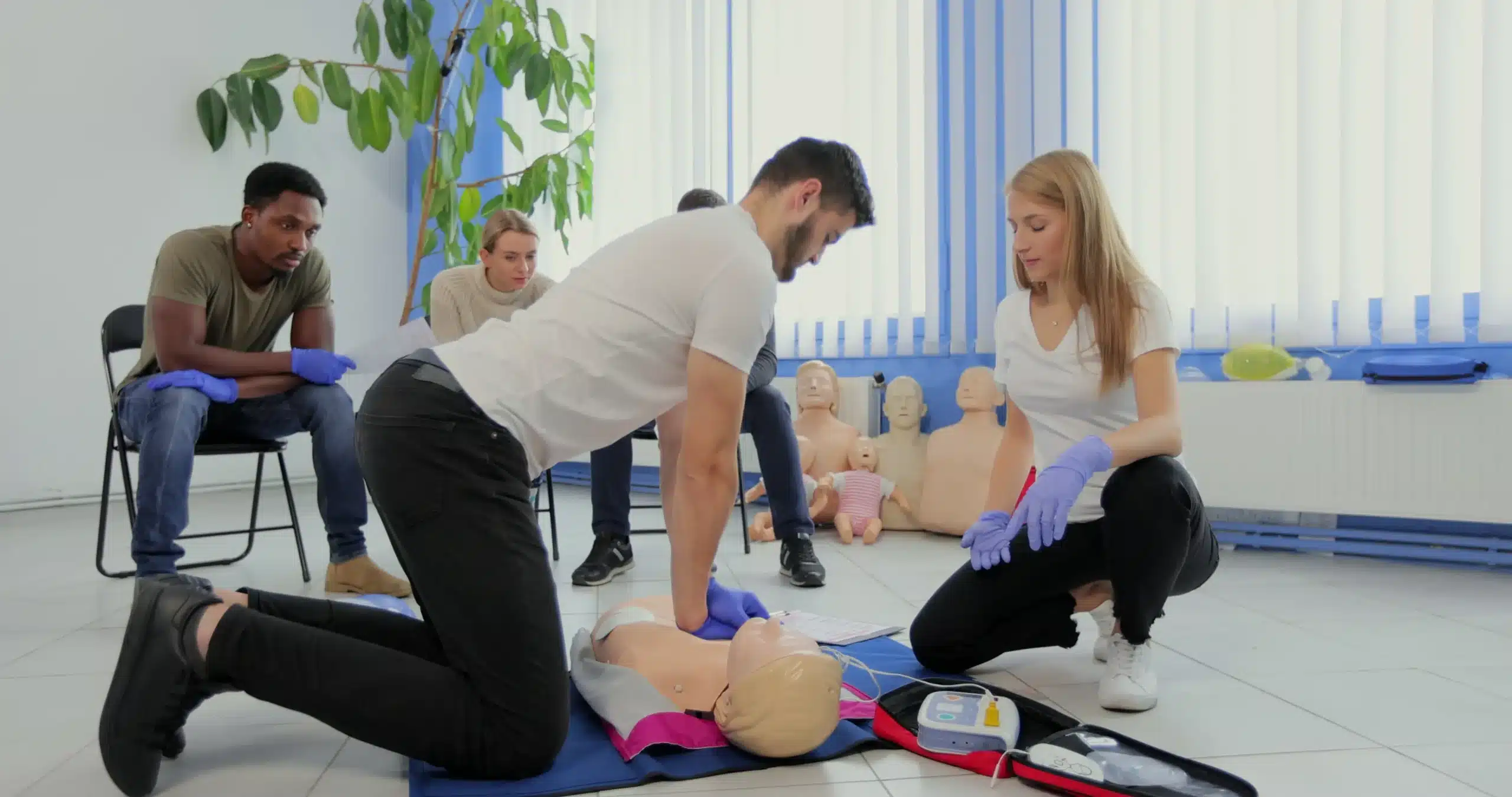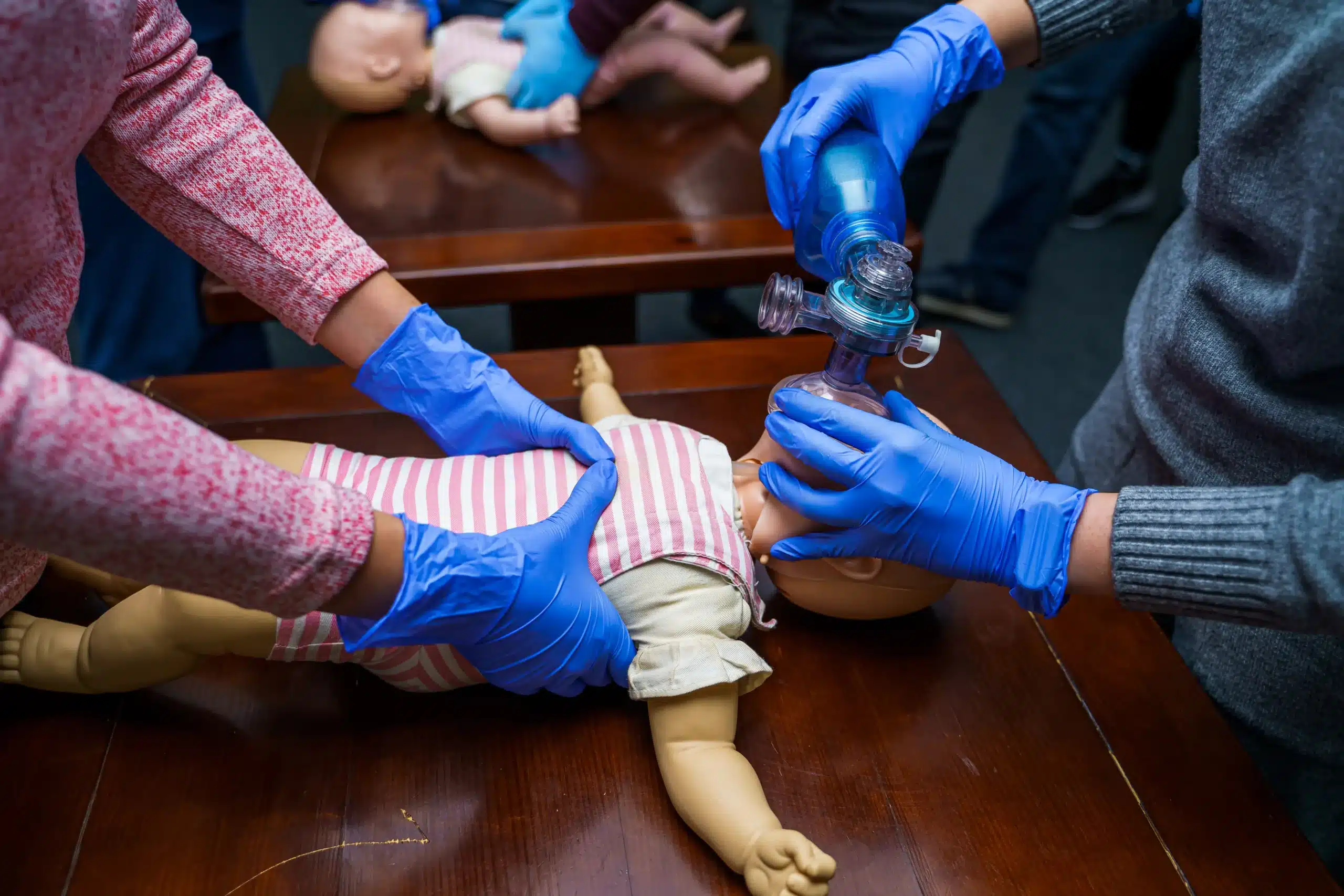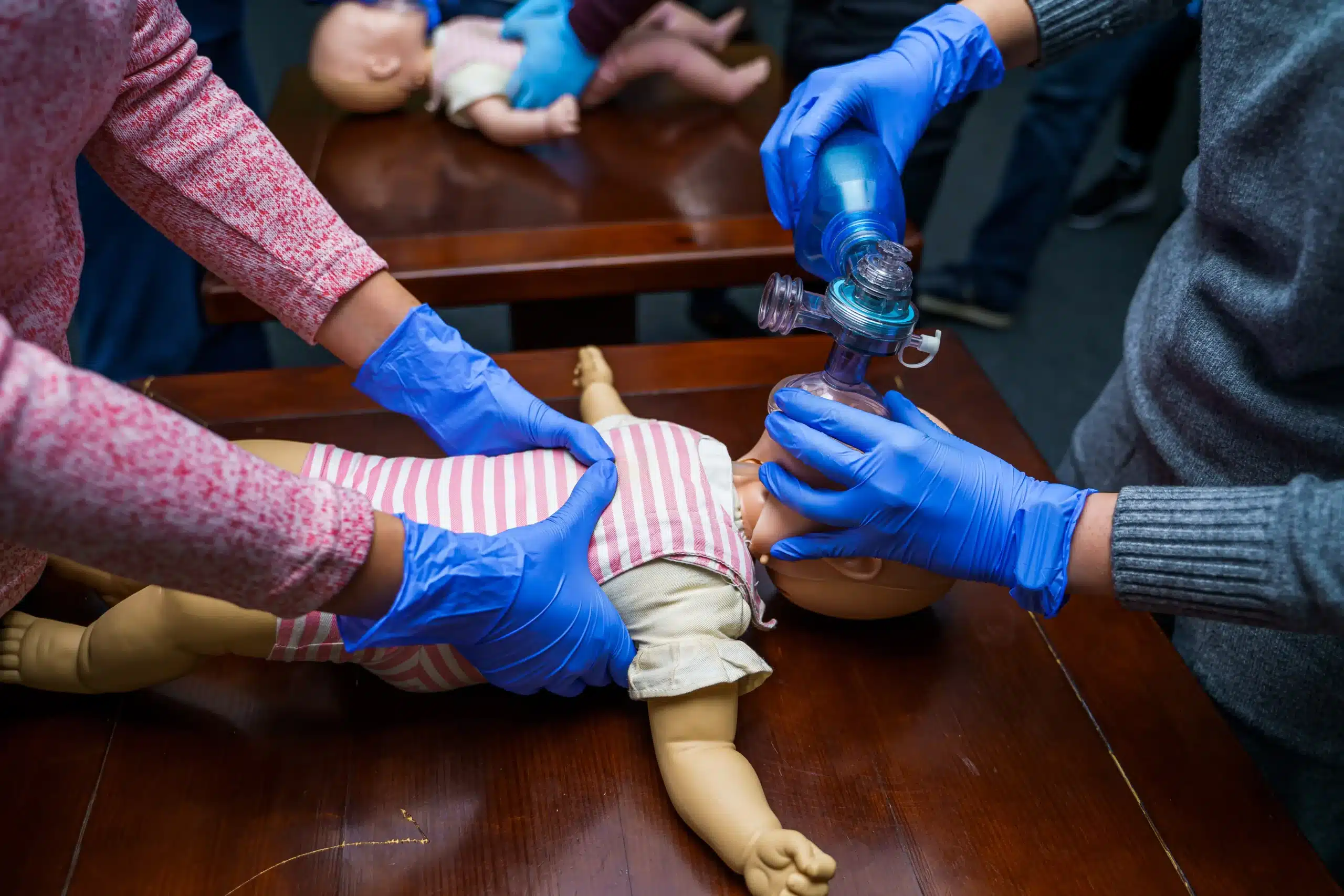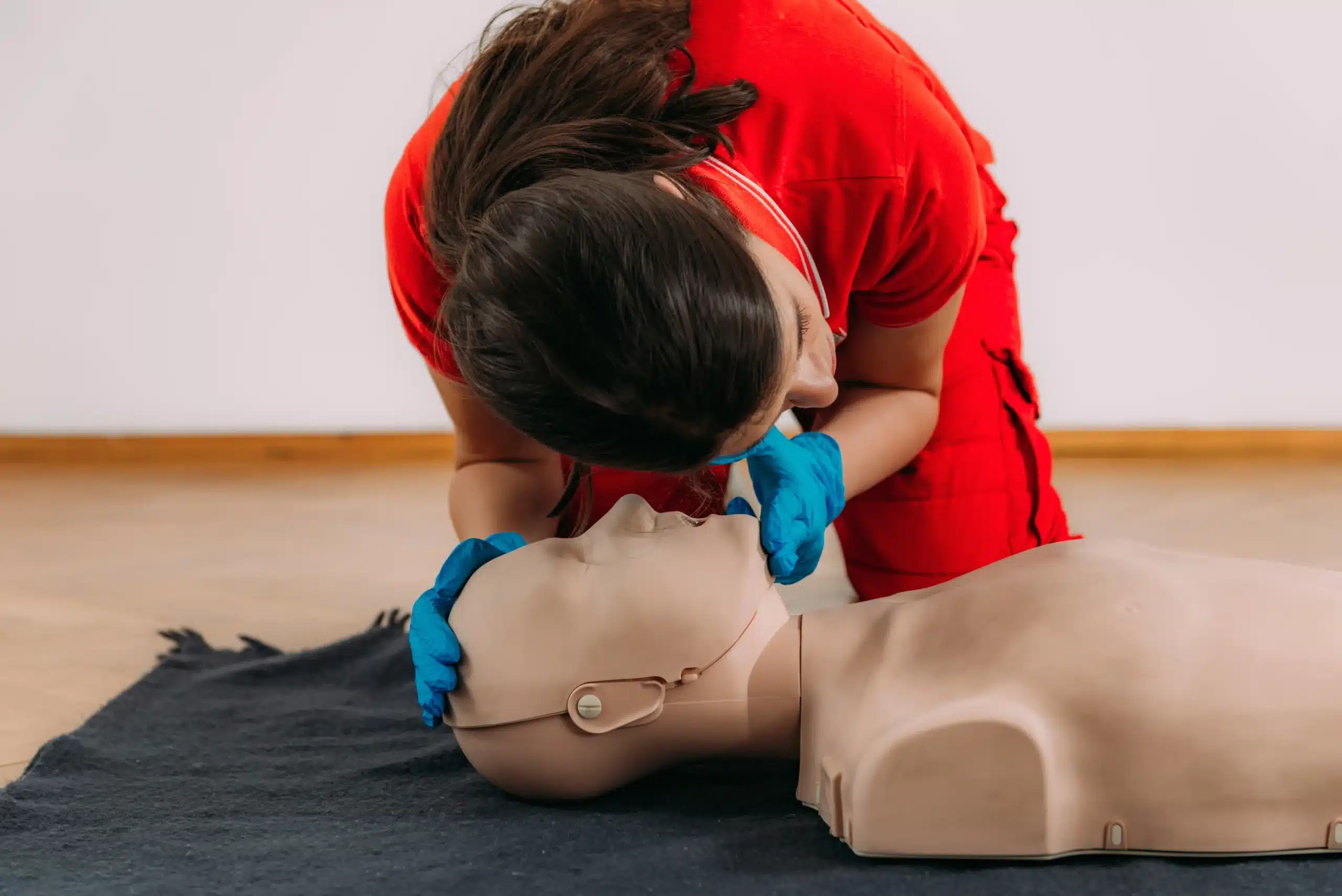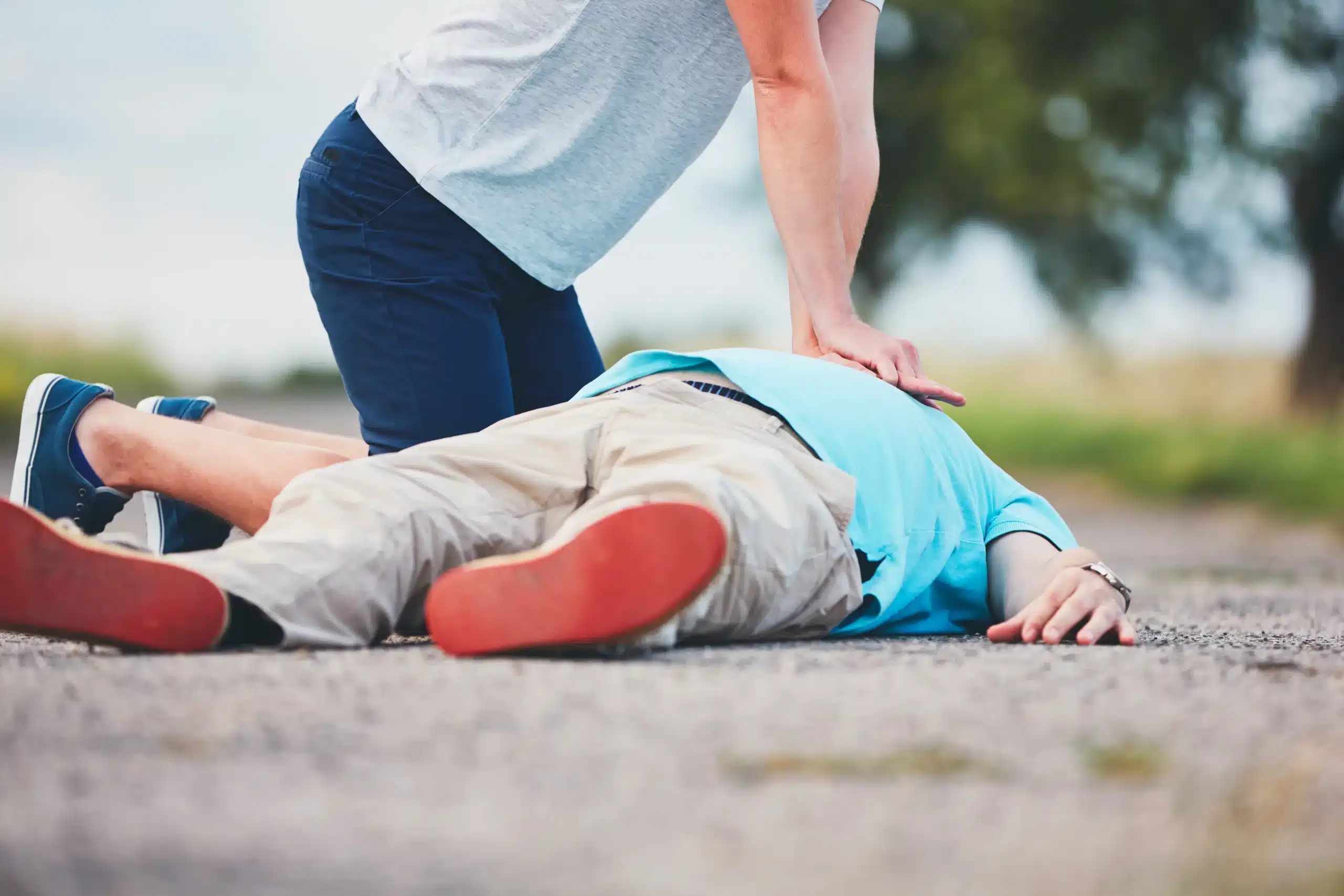Emergencies can happen anytime, anywhere. Being equipped to handle them is a powerful skillset that can bring peace of mind and potentially save lives. BLS training provides the foundation for effective emergency response, covering essential techniques like CPR, AED use, and airway management. This guide will explore the world of BLS, answering common questions, debunking myths, and providing practical advice on finding “bls training near me.” We’ll also delve into the different training formats, the importance of staying up-to-date with the latest guidelines, and how BLS training directly impacts patient outcomes. Join us as we uncover the power of BLS and how you can become a vital link in the chain of survival.
Key Takeaways
- BLS training gives you the power to respond to emergencies: Learn essential life-saving skills like CPR, using an AED, and helping someone who is choking. Find a training program that works for you and your schedule.
- Finding the right BLS course is easy: Explore in-person, blended learning, and online options (note: AHA certification requires an in-person skills test). Compare prices and look for discounts.
- Make the most of your BLS skills: Prepare for your training, stay up-to-date on the latest guidelines, and consider how your skills can make a real difference in someone’s life.
What is BLS Training and Why Do You Need It?
Basic Life Support (BLS) training equips you with the skills to respond to life-threatening emergencies. It’s about more than just CPR—BLS certification covers a range of techniques, including how to use an automated external defibrillator (AED) and how to help someone who is choking. These skills can make a real difference, giving you the confidence to act quickly and potentially save a life. BLS training is essential for anyone who might need to help during a medical crisis.
Key BLS Skills
High-quality CPR is the cornerstone of BLS training. AHA BLS CPR classes teach the most up-to-date protocols, ensuring you’re prepared to deliver effective chest compressions and rescue breaths. BLS training also covers the proper use of AEDs, which can restore a normal heart rhythm during sudden cardiac arrest. You’ll also learn essential airway management techniques to help someone who is struggling to breathe. These combined skills provide a comprehensive approach to emergency care.
Who Needs BLS Certification?
While often associated with healthcare professionals, BLS certification is valuable for everyone. It’s a common misconception that only doctors and nurses need this training—anyone can benefit from learning these lifesaving skills. From teachers and coaches to parents and caregivers, BLS certification empowers individuals to respond effectively in emergencies. BLS training provides the knowledge and confidence to act quickly and provide critical support until professional medical help arrives. Consider getting BLS certified—it could help you save a life someday.
Find BLS Training Near You
Once you’ve decided to get your BLS certification, your next step is finding a training course. This involves a little research to ensure you find a program that fits your needs and budget. Here’s how to get started:
Top BLS Trainers in Merced, CA
Several organizations offer high-quality BLS training in the Merced area. Here are a few reputable options:
Merced CPR Classes
Merced CPR Classes offers a comprehensive range of American Heart Association (AHA) certification courses, including BLS. They focus on providing affordable, high-quality training with a low price guarantee. Their convenient Merced location serves surrounding areas like Turlock and Atwater. Check their website for course schedules and more information.
American Red Cross
The American Red Cross also provides BLS certification courses. While Merced CPR Classes focuses solely on AHA certifications, the Red Cross offers its own curriculum. Be sure to specify your location when searching their website to find classes near you.
American Heart Association
While the AHA doesn’t directly conduct training, they set the standards for BLS certification. You can use the AHA website to find certified training centers in your area offering AHA-approved BLS courses. This ensures your training meets the highest standards.
Local Hospitals and Medical Centers
Many hospitals and medical centers offer BLS training courses to both their staff and the public. Contact your local hospitals or check their websites for information on upcoming BLS training. These courses are often taught by experienced medical professionals, providing valuable real-world insights.
Choosing a BLS Provider
With several options available, how do you choose the right BLS provider? Consider these factors:
- Instructor qualifications: Look for certified instructors with extensive experience.
- Course content: Ensure the course covers the latest AHA guidelines for BLS.
- Class size: Smaller classes often allow for more personalized instruction and feedback.
- Location and schedule: Choose a course that’s conveniently located and fits your schedule.
- Cost: Compare prices, but don’t let cost be the sole deciding factor. Quality instruction is essential.
Check Reviews and Ratings
Before committing to a provider, read online reviews and check ratings. Websites like Yelp and Google can offer valuable insights into past students’ experiences. Look for comments about the quality of instruction, the helpfulness of the staff, and the overall learning environment. This research can give you a better sense of what to expect.
Compare BLS Training Formats and Costs
When choosing BLS training, you’ll find a few different learning formats. Understanding the pros and cons of each will help you find the best fit for your schedule and learning style.
In-Person, Online, and Blended Learning
The American Red Cross offers BLS certification and renewal training in person and through blended learning, which combines online coursework with hands-on skills sessions. This hybrid approach lets you learn the basics at your own pace, then practice your skills with an instructor. Merced CPR Classes offers a similar blended learning format.
It’s important to note that the American Heart Association (AHA) requires both an online component and an in-person skills assessment for BLS certification. This means there’s no fully online option for AHA-certified training. If you prefer fully in-person learning, make sure to choose a provider that offers this format.
Average BLS Training Costs
BLS training costs vary depending on the training provider, your location, and the type of certification. You can expect to pay anywhere from $65 to $95 for initial BLS certification. Recertification courses are typically less expensive, often around $65. ACLS Medical Training lists their prices online, so you can compare costs.
Find Discounts and Promotions
Many organizations offer discounts and promotions to make BLS training more affordable. Look for group discounts, student discounts, or discounts for registering early. Merced CPR Classes offers lower prices for group classes, making it a cost-effective option for workplaces or groups of friends.
Certification Renewal
BLS certification is usually valid for two years. Renewal courses are available for those whose certifications are expiring. Plan to renew your certification within 30 days of its expiration date to maintain your credentials without interruption. The Red Cross allows students to renew their BLS certification if it’s expiring within 30 days.
Prepare for Your BLS Training
Getting ready for your BLS training doesn’t have to be stressful. A little preparation goes a long way! Here’s what you can expect and how to get ready.
Gather Your Materials and Study
Before your BLS class, gather your materials. This typically includes a BLS provider manual and any supplemental materials recommended by your chosen training center. Review the manual beforehand to familiarize yourself with the core concepts and procedures. Check with your training center, like Merced CPR Classes, for their specific requirements.
What Happens During BLS Training?
BLS training is a combination of interactive learning and hands-on practice. You’ll learn how to recognize life-threatening emergencies, provide high-quality CPR for adults, children, and infants, and use an automated external defibrillator (AED). The training also covers basic airway management and techniques for assisting someone who is choking. Expect a dynamic learning environment with demonstrations, skills practice, and simulated scenarios. For more information on what BLS training entails, check out these resources on common misconceptions about BLS.
BLS Training Myths Debunked
There are several common misconceptions about BLS training that might make you hesitate. Let’s clear those up:
-
Myth 1: BLS Certification is Only for Doctors and Nurses. Not true! BLS certification is valuable for anyone in a healthcare setting, including medical assistants, dentists, physical therapists, and students pursuing medical careers. It’s also beneficial for those in other fields like education, childcare, and fitness.
-
Myth 2: BLS Certification is Too Time-Consuming. BLS courses are designed to be efficient and manageable, fitting around busy schedules. You can find options for in-person, blended, or even online learning to suit your needs.
-
Myth 3: BLS Certification is Not Necessary if You Have CPR Training. While CPR is a component of BLS, BLS training is more comprehensive. It covers a broader range of life-saving skills, including using an AED and team dynamics during emergencies. Articles like this one on debunking BLS myths can offer further clarification.
-
Myth 4: Online BLS Certification is Not as Credible as In-Person Training. Look for online BLS courses that are accredited by reputable organizations like the American Heart Association. These courses meet the same standards as in-person training and provide valid certification.
-
Myth 5: BLS Certification is a One-Time Requirement. BLS certification typically needs to be renewed every two years. This ensures your skills and knowledge are up-to-date with the latest guidelines. Regular renewal is essential for all healthcare providers to maintain competency. This article on BLS for healthcare providers discusses this misconception further.
Make the Most of Your BLS Certification
Getting your BLS certification is a significant achievement, but it’s not where the journey ends. It’s the beginning of your ability to make a real difference. Here’s how to maximize the impact of your BLS training:
Use BLS Skills in Real Life
BLS training equips you with essential, life-saving skills applicable in various emergencies. From assisting someone who is choking to performing CPR and using an AED, these skills can transform you into a vital first responder in critical situations. Remember, BLS certification covers core techniques like basic airway management and the use of automated external defibrillators (AEDs), empowering you to act quickly and confidently when every second counts. Consider volunteering at community events or joining a local first aid team to practice your skills and gain practical experience. You can find more information on BLS certification and its benefits through resources like the American Heart Association.
Stay Up-to-Date on BLS Guidelines
The medical field is constantly evolving, and BLS guidelines are updated periodically to reflect the latest research and best practices. Don’t let your skills get rusty. Staying current with these updates ensures you’re always prepared to provide the most effective care. Regularly review the latest guidelines from organizations like the American Heart Association and consider refresher courses to maintain your proficiency and learn about any new advancements in BLS techniques. Your commitment to staying updated demonstrates your dedication to providing high-quality care. Check with your BLS provider for information on renewal courses and updated resources.
How BLS Training Impacts Patients
BLS training has a direct and positive impact on patient outcomes. By providing immediate and effective care during emergencies, certified individuals can significantly improve a patient’s chances of survival and recovery. Prompt intervention with BLS techniques can dramatically increase survival rates in cases of cardiac arrest and other life-threatening conditions. Knowing you have the skills to make a difference can boost your confidence and empower you to act decisively in critical situations, ultimately contributing to better patient care. For more information on the impact of BLS training, explore resources like Smart Sim Registration.
Related Articles
- BLS Courses in Atwater: Your Guide – Merced CPR Classes
- Basic Life Support in Atwater: A Practical Guide – Merced CPR Classes
- BLS Training in Turlock: Your Complete Guide – Merced CPR Classes
- BLS Certification in Merced: Your Complete Guide – Merced CPR Classes
- Debunking Common CPR Myths Save Lives with Facts
Frequently Asked Questions
How do I choose the right BLS training provider? Finding the right provider involves checking instructor qualifications, making sure the course covers the latest guidelines, considering class size for personalized learning, and picking a convenient location and schedule. Don’t forget to compare costs and check reviews from past students to get a feel for the quality of instruction and overall experience.
What’s the difference between CPR and BLS training? While CPR is a key part of BLS, BLS training covers more than just CPR. It includes other essential skills like using an AED and managing airways. It also emphasizes a team approach to emergencies, preparing you to work effectively with others in a crisis.
How much does BLS training cost, and are there any discounts? BLS training costs typically range from $65 to $95 for initial certification, with recertification courses often costing around $65. Many providers offer discounts for groups, students, or early registration, so it’s worth checking for those.
What if my BLS certification is about to expire? BLS certifications are usually valid for two years. If yours is expiring, look for a renewal course. It’s a good idea to renew within 30 days of the expiration date to keep your certification current without any gaps.
How can I use my BLS skills after I’m certified? Your BLS skills can be used in various emergencies, from helping someone who’s choking to performing CPR and using an AED. Consider volunteering or joining a local first aid team to practice your skills and gain real-world experience. Staying up-to-date on the latest guidelines is also important, so look for refresher courses and resources to maintain your proficiency.
